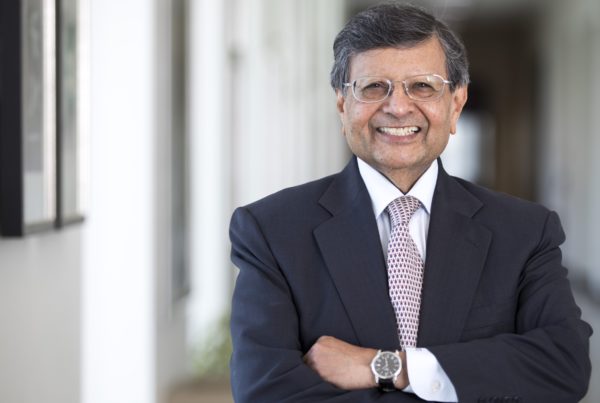Published: Apr 12, 2006 in Knowledge@Emory
When the first stage of the global economy launched in the 1960s, it was primarily driven by manufacturers that were searching for inexpensive manual labor. But today, technological advances and other forces are transforming the competitive landscape from a purely physical one to a playing field that’s increasingly based on the acquisition of knowledge. As businesses reshape themselves to respond to the new environment, faculty from Emory University’s Goizueta Business School and other experts say that one side effect is that the old model of the “employer-for-life” is heading for extinction. Instead, companies are sending a new message to employees: learn to fend for yourselves.
The Corporate Format is Undergoing a Revision
“We are seeing more companies pushing more responsibilities downstream,” observes Jagdish Sheth, a professor of marketing and corporate strategist at Emory University’s Goizueta Business School. “Employees are being tasked with more responsibilities, ranging from job responsibilities to their retirement planning. This is occurring across a wide range of industries.”
The changing environment isn’t just limited to the employer-employee sphere. “A number of modern ‘conveniences’ like automatic banking machines and automatic ticket kiosks can be viewed as devices that let companies push some part of the work to the customer,” says Sheth. “But consumers generally don’t complain, because they’re focused on the perceived benefits.”
Within the work environment, one illustrative example is the reduction in the number of secretaries in most offices. Sheth points out that the inexpensive personal computers and word processing programs made it cost-effective to have employees, often even executives, handle their own correspondence, proposals and other writing tasks.
Similarly, some of the Big Four and other CPA firms, for example, no longer assign permanent offices to their executives, who frequently travel between locations. Instead, to save on real estate costs, they reserve office space on an as-needed basis.
A New Employee Paradigm
“Employees don’t want to be locked in by such constraints as time or location,” notes Sheth. “Instead, companies are moving to a distributed work model, where individuals and clusters of people—who may be employers or so-called ‘e-lancers’ [freelancers who move from one firm to another, following new projects]—located in different cities, countries or continents, collaborate on assignments, then break up and pursue their own agendas. The entire corporate model is slowly shifting to a ‘Self Inc.’ format of self-employed professionals.”
An aspect of this kind of evolution was explored in a paper co-written by Benn R. Konsynski, a chaired professor of decision and information analysis at Goizueta. Titled The Improvisation-Efficiency Paradox in Inter-Firm Electronic Networks: Governance and Architecture Considerations, it notes that historically, the framework of an enterprise has been based on hierarchies, or formal business units that occupy a specific rank in the overall corporate structure.
Konsynski, however, points out that the traditional, siloed architecture is giving way to a faster-reacting, collaborative network that exhibits market-like attributes. “The move from traditional organizational architectures to spontaneous collaborative networks requires an organizing logic in which the boundaries of the collaborative network are malleable,” he writes. “Malleability requires that firms that do not belong to the network at a given point in time can be brought in without the cost of dedicated technology investments by such prospective network participants.”
A New approach Brings Personnel Issues
Giuseppe (Joe) Labianca, an assistant professor of organization and management at Goizueta, notes that the movement towards a distributed work environment puts pressure on employees to create informal linkages across the organization and the external environment.
“There’s a greater need for professionals who can create their own external networks and who can also build internal networks to accomplish their goals,” he says. “At the same time, online and other support services are being created to meet these needs.”
Illustrating his point, Labianca notes that there’s been a marked increase in the formation of networking clubs and professional organizations that encourage interaction between people with specific kinds of responsibilities. But he adds that it’s not always easy for workers to meet the challenges that come with the new trend in corporate structure.
“As the decision-making process is pushed down to ever-lower levels, individuals have to understand how their role fits into the larger organization,” cautions Labianca. “This can be challenging, especially for lower-level employees who tend to be siloed, but it’s something that need to be addressed.”
A distributed business model may present some organizational and personal challenges as employees move in and out of companies, but it can also enhance creativity, observes Jill E. Perry-Smith, an assistant professor of organization and management at Goizueta.
“Stronger relationships tend to constrain creative thinking,” she says. “In contrast, new people bring in different ways of thinking and more diverse perspectives.”
She adds that creativity is an important part of just about any kind of job that involves finding solutions to mission-critical problems. “Advertising and R&D are the kinds of jobs that immediately spring to mind when people think of creative positions,” says Perry-Smith. “But knowledge workers also benefit from a creative mindset. There is a broad range of positions that utilize creative thinking.”
Technology Still Plays an Important Role
Konsynski also makes the point that technology is a significant driver in the changing corporate structure. His paper notes, for example, that the relative affordability of embedded information technologies “means that the feasibility of pervasive tagging of objects is growing. This allows discrete objects to communicate with each other following simple rules; collectively, they create powerful swarming behavior that can be surprisingly smart.”
The widespread adoption of technology like radio frequency identification, or RFID tags, is enabling individual firms to reconsider their collaboration with other companies, “as well as trillions of discrete entities and objects in the extended network,” Konsynski says. “We [co-authors] believe that this is one of the key technological architectural elements of smart business networks.”
The Latest Chapter in a History of Innovation
Sheth notes that the move towards a decentralized work model is not the first time that a traditional corporate framework has undergone change.
In the early 1900s, Fredrick Taylor applied a scientific method to the management of workers in an effort to improve productivity. Known today as Theory X, its recommendations included a division of labor, similar to that used by Henry Ford in his assembly lines that separated tasks into discrete activities that could be handled by appropriately trained individuals and teams.
But Taylor’s approach, which was widely adopted by manufacturers, had a shortcoming: it ignores human complications, including ones related to workers’ personal needs and interpersonal reactions with other employees. Although they worked harder and with greater efficiency, worker dissatisfaction spread, and appears to have been a factor in the rise of labor unions.
Sheth says that after WWII, Theory Y, or the human relations movement was ushered in by psychologists and other professionals. This strategy emphasized a view of workers through a psychological prism, emphasizing their fit with their company, rather than as a commodity. That too, however, is being supplanted by a new school of thought.
“Current organizational thought is focusing on Theory U, which seeks to empower employees through self-esteem and independence,” explains Sheth. “Theory U, which itself is in an evolutionary stage, recognizes that companies today require innovative thinking and collaboration across traditional boundaries, ranging from organizations to cultures.”
Theory U envisions a set of core capacities that are interrelated, with each functioning as a gateway to the next, ultimately unifying the entire corporate process.
This echoes Konsynski’s observations, which note for example, that such business processes as manufacturing, maintenance, and delivery are often partitioned among partner firms in networks. So one focal firm might assemble a product, while different parts of it might be manufactured by various partners. Another partner might market it, and yet another could provide after-sales support.
“A problematic assumption embedded in this approach is that firms confound the partitioning of business processes with the partitioning of the expertise that is needed to perform the processes,” he says. “An improvisational approach would require the firms to treat the two as separate but interdependent approaches to specialization.”
Konsynski explains that although firms in improvisational networks must maintain deep specialization in the task domain, they need to remain de-specialized in their knowledge domain.
Pushing Closer While Pulling Back
“Deeper task specialization means that specialist firms will develop deeper expertise beyond their specialized process and task domains and are therefore more likely to be attuned to technical advances and environmental shifts in those domains,” he says. “This is illustrated in the experience of the Japanese automotive parts manufacturing segment and the global software industry, which indicate that such redundant knowledge can facilitate effective inter-firm collaboration.”
Such redundancy increases the capacities of individual firms to better relate to and coordinate with other firms in the network, he says.
“For planning and execution of collaborative processes to converge, it may be useful for firms to have some understanding of their partners’ domains,” observes Konsynski. “This allows a network to reduce coordination complexities without compromising the benefits of specialization inside individual member firms. Therefore, redundancies in knowledge increase the absorptive capacity of the network by allowing member firms to specialize in their activities but to de-specialize in the knowledge that they internally maintain.”
As Sheth points out, “The long-term key to corporate evolution is not just profits, but instead is about innovation and value creation. These are the goals of the new business processes.”




